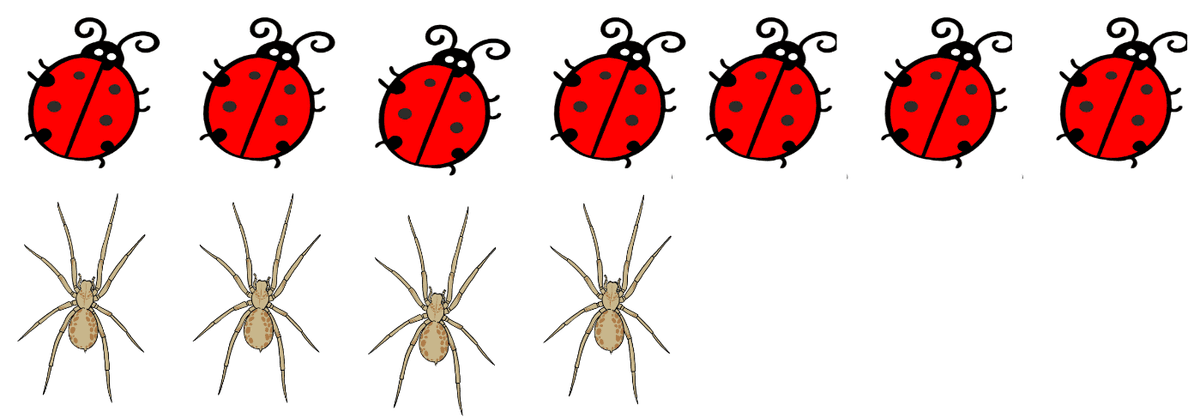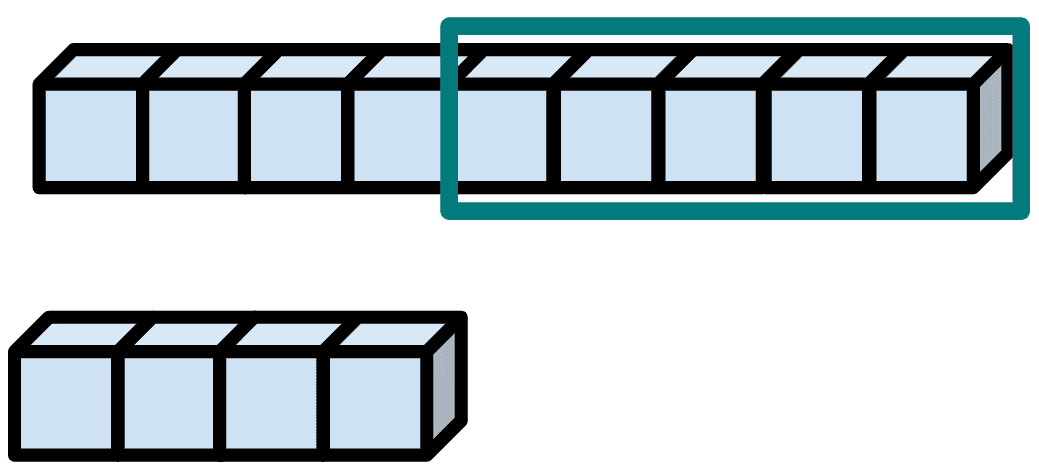- Year 2
Compare the number of objects in two sets or difference between two measures.
I can compare the number of objects in two sets or describe the difference between two measures.
- Year 2
Compare the number of objects in two sets or difference between two measures.
I can compare the number of objects in two sets or describe the difference between two measures.
These resources will be removed by end of Summer Term 2025.
Switch to our new teaching resources now - designed by teachers and leading subject experts, and tested in classrooms.
These resources were created for remote use during the pandemic and are not designed for classroom teaching.
Lesson details
Key learning points
- We can compare two sets of items. There are more ___ than ___. There are fewer ___ than ___.
- We can use a range of vocabulary to compare two measures. Longer/shorter, taller/shorter, heavier/lighter etc.
- We can see the difference between two numbers or measures as the ‘gap’ between them.
- Cubes, bar models and number lines can help us to visualise this ‘gap’
Keywords
More - A larger quantity or amount.
Fewer - A smaller quantity or amount.
Difference - The result of subtracting one number from another. Way in which two or more things we are comparing are not the same.
Common misconception
Using less and fewer incorrectly when describing and comparing.
Reinforce 'fewer' is used for things we can count (not as many) and 'less' is used for things we cannot count (not as much). Explore a range of examples of this together.
To help you plan your year 2 maths lesson on: Compare the number of objects in two sets or difference between two measures., download all teaching resources for free and adapt to suit your pupils' needs...
To help you plan your year 2 maths lesson on: Compare the number of objects in two sets or difference between two measures., download all teaching resources for free and adapt to suit your pupils' needs.
The starter quiz will activate and check your pupils' prior knowledge, with versions available both with and without answers in PDF format.
We use learning cycles to break down learning into key concepts or ideas linked to the learning outcome. Each learning cycle features explanations with checks for understanding and practice tasks with feedback. All of this is found in our slide decks, ready for you to download and edit. The practice tasks are also available as printable worksheets and some lessons have additional materials with extra material you might need for teaching the lesson.
The assessment exit quiz will test your pupils' understanding of the key learning points.
Our video is a tool for planning, showing how other teachers might teach the lesson, offering helpful tips, modelled explanations and inspiration for your own delivery in the classroom. Plus, you can set it as homework or revision for pupils and keep their learning on track by sharing an online pupil version of this lesson.
Explore more key stage 1 maths lessons from the Calculating within 20 unit, dive into the full primary maths curriculum, or learn more about lesson planning.

Licence
Prior knowledge starter quiz
6 Questions
Q1.Look at this expression. 8 + 5 Which expression correctly shows that the second addend has been partitioned to bridge 10?
Q2.How should 7 be partitioned in each expression to bridge through 10?
5 + 2
4 + 3
3 + 4
2 + 5
Q3.8 + 6 = 14 6 is partitioned to bridge through 10 What is the missing addend? 8 + + 4 = 14
Q4.Each equation is equal to 10 Match each equation to its missing part.
5
4
3
2
Q5.Laura used a number line for this equation. 13 − 5 = 8
How has Laura shown bridging through 10?

Q6.How should 6 be partitioned to bridge through 10?

Assessment exit quiz
6 Questions
Q1.What vocabulary can be used to compare Alex and Sofia?

Q2.Look at the image. Which statements are true?

Q3.Which statement correctly compares the flower and the grass?

Q4.There are more ladybirds than spiders.

Q5.What is the difference between the numbers shown?

Q6.Izzy’s bean is taller than Andeep’s bean. What is the difference between the heights? cm



